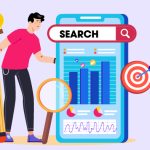Understanding the ins and outs of online marketing can be a game-changer for your business. At the heart of this field are three key strategies: Search Engine Optimization (SEO), Search Engine Marketing (SEM), and Pay-Per-Click (PPC) advertising. Each one offers unique benefits and plays a critical role in how you connect with your audience online. Combining SEO, SEM, and PPC creates a powerful toolkit that can significantly boost your online visibility. This combination can help you reach your audience more effectively, from potential customers to loyal fans, regardless of their journey. Let’s dive into how these strategies work together and how they can form a unified online marketing plan that delivers accurate results.
Understanding SEO
SEO, or Search Engine Optimization, is about making your website more visible when people use search engines. If someone is looking for a product or service and your site pops up in their search results, you’re more likely to get their business. SEO is about attracting visitors without having to pay for ads.
To do SEO well, you need to consider your content’s quality, your website’s setup, and the words you use. It’s like ensuring your shop window is enticing and tells passersby precisely what they’ll find inside. You also want other reputable websites to recommend you, which is where backlinks come in—they’re like good reviews online.
Keywords are also super important. These are the words and phrases that people type into search engines. If you can figure out what your potential customers are looking for and create content that includes those keywords, you’re on the right track to getting your website noticed.
Unveiling SEM
SEM, or Search Engine Marketing, is a bit like SEO, but it’s more like the whole toolbox, whereas SEO is just one tool. SEM includes SEO and other tactics, like paying to appear in search results.
When you’re working on SEM, you’re not just looking to catch people’s eyes with great content but also willing to pay for a spot right where they’re looking. This is done through pay-per-click (PPC) ads, where you pay a small fee every time someone clicks on your ad. It’s a way to buy visits to your site and get people there organically with SEO.
Understanding the difference between organic and paid search is vital in SEM. Organic search results are the free listings that appear because they’re relevant to someone’s search. Paid search results are like premium spots on a billboard—ads that you pay to appear at the top or bottom of the search results page.
Understanding PPC
Pay-per-click, or PPC for short, is an online advertising where you pay a small fee every time someone clicks on one of your ads. It’s a way to get visitors to your website quickly, but managing your PPC campaigns smartly is essential to ensure you’re getting your money’s worth.
Struggling with Digital marketing? Book Your Free Strategy Session!
- 30-Minutes Session
- Expert Insights
- Data-Driven approach
- Optimized Strategies for Your Goals
Some of the most well-known PPC platforms are Google Ads and Bing Ads. These platforms let businesses show ads to users searching for keywords related to the business’s offers. You’ll often see these ads at the top of the search results, marked as ‘sponsored.’
To get the most out of PPC, you must do your homework on which keywords to target, monitor your ads closely, and tweak them as needed. It’s all about understanding the numbers—how much you’re spending versus how much you’re making from the clicks.
Combining SEO, SEM, and PPC for Better Results
SEO (Search Engine Optimization), SEM (Search Engine Marketing), and PPC can power up your online marketing. SEO is all about getting your site to show up naturally in search results, SEM covers paid and unpaid strategies to get more visibility, and PPC is like a shortcut to get your site seen.
SEO can improve your SEM and PPC efforts. For example, if your site ranks well organically, it can help your PPC ads get better quality scores. That means you could end up paying less for each click.
Many success stories exist about businesses combining SEO, SEM, and PPC. These businesses have seen more people visit their sites, their sites showing up better in search results, and more customers doing what they want them to do, like buying something or signing up for a newsletter.
Setting Clear Goals
When you start an online marketing campaign, knowing what you want to achieve is essential. This might be increasing the number of people who visit your website, encouraging them to buy something, or making sure more people know about your brand.
These marketing goals must align with the bigger picture of what you want your business to achieve. For instance, if you want to sell more products, your marketing goal might be to attract more potential customers to your site.
To know if you’re succeeding, you must monitor specific indicators. These include the number of people visiting your site, the number of people clicking on your ads, the number of people buying something, and whether you’re getting a good return on your marketing dollars.
Conducting Comprehensive Keyword Research
Understanding what your potential customers are typing into search engines is critical to good SEO (Search Engine Optimization), SEM (Search Engine Marketing), and PPC (Pay-Per-Click) campaigns. When you know this, you can create content and ads that show up when people search for these terms.
Struggling with Digital marketing? Book Your Free Strategy Session!
- 30-Minutes Session
- Expert Insights
- Data-Driven approach
- Optimized Strategies for Your Goals
There are many tools out there to help with keyword research. Google Keyword Planner, SEMrush, and Moz Keyword Explorer are some popular ones. They can help you find the right words and phrases to focus on.
When looking for the best keywords, you want to find ones that many people are searching for, but not many other sites are using. These keywords can bring more visitors to your site and increase the chances that they’ll do what you want, like making a purchase.
Optimizing On-Page Elements
A well-organized website invites both users and search engines to explore with ease. A clear structure helps visitors find what they need quickly, enhancing their overall experience. For search engines, it simplifies the process of crawling and indexing your site, which is essential for good SEO. Think of your website as a library where every book is neatly categorized – it should be just as simple for users to browse your web pages.
Meta tags and descriptions are like the sneak peeks of your web pages. They give users and search engines a brief overview of what to expect before clicking through. Writing engaging and relevant meta descriptions can lead to higher click-through rates from search results, improving your site’s SEO performance. These snippets should be enticing and informative and include your main keywords to align with people’s searches.
Keywords are the bridge between what people are searching for and the content on your website. Weaving these keywords into your content, titles, and headers naturally makes your site more relevant to those searches. It’s like adding signposts throughout your content that guide search engines and users alike, helping them understand your page and improving your visibility in search results.
Creating Engaging Ad Copy
The headline of your ad is your first chance to catch a potential customer’s eye. It should be attention-grabbing and make someone want to learn more about your offering. The description adds meat to the bones, providing more detail clearly and compellingly. It’s important to highlight what sets your product or service apart and use language encouraging readers to act.
A/B testing is like a science experiment for your ads. By comparing the two versions, you can see which performs better and use that knowledge to make your ads more effective. It’s a process of trial and error that helps you understand your audience’s preferences. This can lead to more clicks, more engagement, and, ultimately, more conversions.
Different social media platforms have their own culture and language. An ad that works on Facebook might not hit the mark on Twitter. Customizing your ad copy to fit the platform you’re using is essential. Similarly, your audience is not a monolith. Different groups may have different reactions to your messaging. Tailoring your ads to resonate with specific segments can lead to better engagement and more successful campaigns.
Developing Landing Pages that Convert
Creating effective landing pages is essential for successful online marketing, whether you’re focusing on search engine optimization (SEO), search engine marketing (SEM), or pay-per-click (PPC) campaigns. Ensure your landing pages are visually appealing and easy to use. Visitors should be able to quickly understand what your page is about and find what they need without any hassle. Use eye-catching images and attention-grabbing headlines to draw them in. Your content must be relevant to your audience and offer them real value.
Struggling with Digital marketing? Book Your Free Strategy Session!
- 30-Minutes Session
- Expert Insights
- Data-Driven approach
- Optimized Strategies for Your Goals
Having clear calls-to-action (CTAs) is another critical factor. CTAs tell your visitors what you want them to do next, like signing up for more information, downloading a resource, or purchasing. Place your CTAs where they’re easy to spot and use words that encourage action, such as “Get started,” “Learn more,” or “Buy now.”
To boost your landing page’s effectiveness, you should continuously evaluate and adjust it. This means looking at the design, content, and technical setup. Use tools that track user behavior on your page to see what’s working and what isn’t. This data can help you make informed decisions and improve the user experience.
Maximizing Click-Through Rates (CTR)
For organic search results, getting a higher click-through rate (CTR) is a vital goal of SEO. You can do this by crafting meta titles and descriptions that grab attention and contain the right keywords. It’s also essential to provide content that aligns with what people are searching for. Monitor your SEO practices and adapt them as trends and user behaviors change.
Regarding PPC ads, the visibility of your ads and their CTR depends on how well you choose and bid on keywords, where you place your ads, and how engaging your ad copy is. Keep tabs on your PPC campaign performance and adjust your strategies based on what the data tells you.
Meta titles and descriptions are significant for CTR because they give users a preview of your page content and motivate them to click. Ensure they’re accurate and engaging, and include relevant keywords to improve the chances of users visiting your page.
Monitoring and Analyzing Performance
Keeping an eye on your website’s performance is critical to SEO, SEM, and PPC marketing success. Analytics tools let you see how much traffic your site gets and how users interact. This information is like gold for marketers—it tells you what’s working and what’s not. When you check these stats regularly, you can catch any problems early, see trends, and make intelligent choices based on the numbers.
When you run SEM and PPC campaigns, knowing if they’re hitting the mark is essential. Tracking the right metrics, such as how many times your ad was shown (impressions), how many clicks it got, the click-through rate (CTR), how many of those clicks led to a desired action (conversions), and how much each conversion costs you, can tell you a lot. With this info, you can tweak your ads to perform better and get more bang for your buck.
Information is power, especially when fine-tuning your online marketing efforts. By diving into the data from your website and ad campaigns, you can make changes that improve the experience for your visitors and boost your results. Whether changing your keywords, adjusting your ad spend, or rewriting your content, the decisions you make with data can lead to big wins.
Implementing Successful Link-Building Strategies
Backlinks are like votes of confidence from other websites and are super important for SEO. When reputable and related websites link to your site, search engines take that as a sign that your site is credible and should be more visible to people searching online.
Getting good backlinks is about having content others find helpful and want to share. You can also contact other site owners to see if they want to link to your content. Remember, it’s not just about getting any links—it’s about getting the right ones that make sense for your site and help your audience.
It’s tempting to take shortcuts in link building, but that’s a bad idea. Avoid sketchy tactics like buying links or getting involved in schemes promising links quickly. Search engines are intelligent and might penalize your site if you try to game the system. Instead, focus on earning links correctly by providing value and building relationships with other sites.
Leveraging Social Media for SEO, SEM, and PPC
Social media isn’t just for sharing selfies and cat videos; it’s a goldmine for boosting your search engine optimization (SEO), search engine marketing (SEM), and pay-per-click (PPC) campaigns. With billions of users, platforms like Facebook, Twitter, and LinkedIn can help you reach a massive audience with content tailored just for them. These platforms give you tons of data to help fine-tune your marketing strategies. Social media lets you connect with your audience more personally, leading to a stronger bond with your brand and, ultimately, more sales.
When people like, share, or comment on your content on social media, it’s like they’re giving you a thumbs-up in the eyes of search engines. These social signals can help boost your website’s organic rankings. Sharing your content on social media also increases its visibility, which can lead to more organic traffic. Think of it as spreading the word about your brand far and wide without having to shout from the rooftops.
Running paid social media campaigns is like having a megaphone that reaches precisely who you want to talk to. These campaigns let you target specific groups, ensuring your message reaches the right audience. Choosing the right keywords and creating content that draws people in can make your paid social media efforts pay off.
Staying Ahead with Competitive Analysis
Knowing what your competitors are up to is vital for staying one step ahead. By closely examining their strategies, you can determine what they’re good at and where they’re not so strong. This includes checking out the keywords they use, the quality of their content, how many backlinks they’ve got, and their social media game. Understanding these can help you spot opportunities to make your marketing even better.
Competitive analysis helps you see what your target audience is into and how well your competitors are meeting those interests. Maybe there’s a type of content that no one else is offering, or perhaps there’s a product or service gap just waiting for you to fill. By identifying these opportunities, you can set yourself apart and offer something that resonates with your audience.
After completing your homework on the competition, it’s time to tweak your online marketing to maximize what you’ve learned. This could mean stepping up your content game, making your website more friendly to specific keywords, or changing your PPC strategy to get more bang for your buck. By adjusting your approach based on solid competitive insights, you can carve out a stronger position in the market.
Creating a budget for your online marketing efforts is essential. Consider what you can afford while considering your business size, goals, and competitors. It’s a balancing act: You want to spend enough to hit your targets but not so much that it strains your finances. Look for the sweet spot where your investment pays off in increased visibility and sales.
When you’re dividing up your budget for SEO (search engine optimization), SEM (search engine marketing), and PPC (pay-per-click advertising), remember that each area needs different things. SEO is about the long game; it might take time to see results, but it’s often more sustainable. SEM and PPC can give you a quicker boost, but they’ll keep costing you money to maintain your presence. Consider what skills you have in-house and what you might need to outsource. This will help you use your budget in the most efficient way possible.
Final Thoughts
When you weave together SEO, SEM, and PPC, you do more than get your name out there. You’re crafting an experience that smoothly takes potential customers by the hand and leads them to purchase. This blend of strategies allows you to present a unified front, ensuring your business stands out in a crowded online marketplace. It’s not enough to set it and forget it, though. The online world never stands still, so keeping a close eye on your strategies, tweaking them as needed, and staying focused on what your customers want and need is crucial. By visiting Flexibly, being informed by data, and being centered on the customer experience, you can make SEO, SEM, and PPC work harmoniously to support your online success now and in the future.



